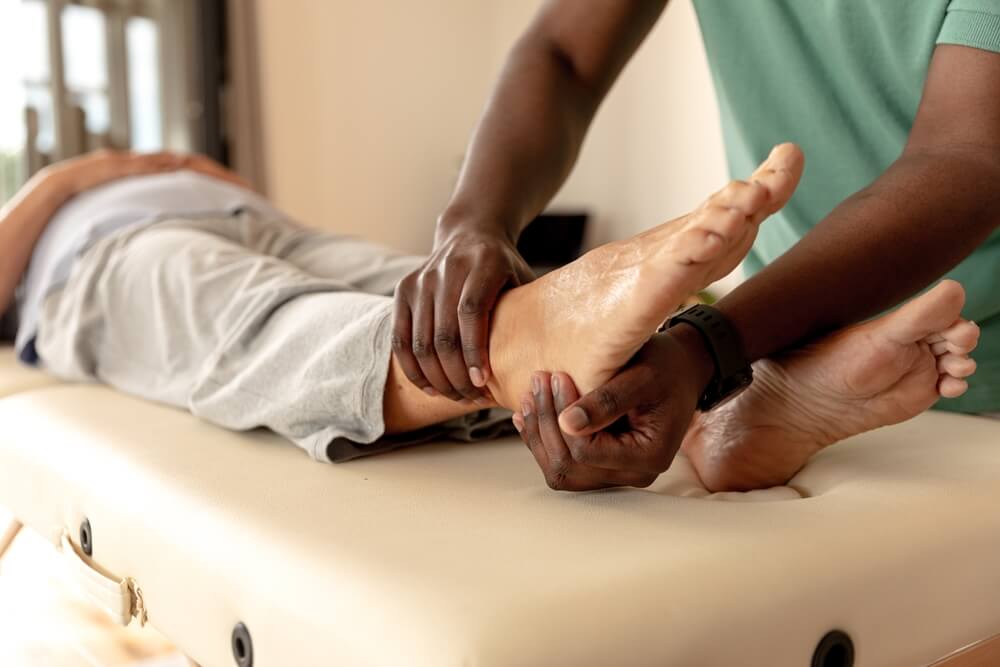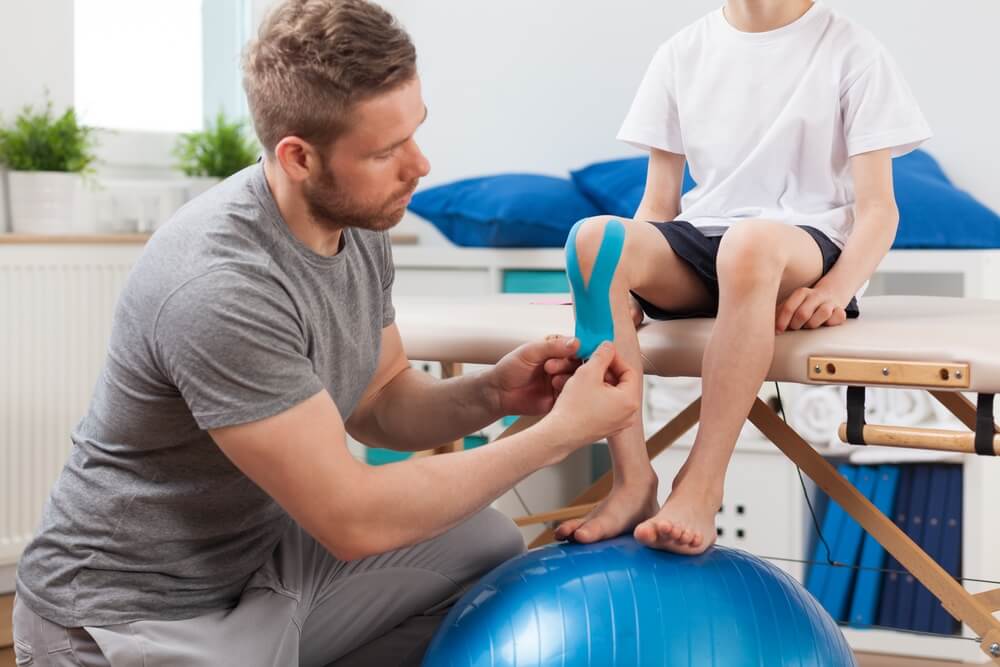Bone and Joint Physical Therapy—an Orthopedic Specialty
Physical therapy is an important component of treatment for many conditions and for rehabilitation after surgery or injury. There are several areas of physical therapy, including orthopedic therapy as well as bone and joint physical therapy. The combination of orthopedic medicine and physical therapy is a powerful duo for helping patients reduce pain, improve mobility, and restore quality of life.
About Physical Therapy Specialties

Physical therapy is a type of medical care and treatment that involves exercise, massage, and other types of physical manipulation and physical stimuli, such as heat or cold application. Trained physical therapists (PTs) work with patients to treat a wide range of conditions, from arthritis to back pain to cardiovascular disease. They also work with patients recovering from surgery or injuries and who can benefit from improved mobility.
Some PTs hold specialized certifications that allow them to work on specific patient needs. Orthopedic physical therapy focuses on the musculoskeletal system; geriatric PTs work with older patients; and oncology PTs help people with cancer.
Other specialties in physical therapy include neurology, cardiovascular and pulmonary, pediatric, wound management, women’s health, and sports.
The benefits of physical therapy are numerous and include:
- Management of symptoms for specific conditions
- Recovery after an injury
- Reduced risk of future injuries
- Reduced pain
- Improved mobility
- Improved strength, balance, and coordination
- Improved recovery time after surgery
What is Orthopedic Physical Therapy?

Orthopedic physical therapists focus on the musculoskeletal system, including bones, joints, muscles, and connective tissue. Like orthopedic doctors, these PTs help patients with all kinds of injuries and medical conditions related to the musculoskeletal system.
An orthopedic PT evaluates patients, diagnoses conditions, identifies patient needs and goals, and creates individualized treatment plans that include bone and joint physical therapy. They then guide patients through treatment sessions and often provide exercises to do at home.
What Conditions Do Orthopedic PTs Treat?
Physical therapy in orthopedics is often conducted alongside orthopedic surgeons, sports medicine specialists, and other medical professionals. They play an important role in treating conditions directly and also supplementing other types of medical care. Some of the conditions, injuries, and symptoms an orthopedic PT treats include:

- Arthritis
- Bursitis
- Tendonitis
- Fractures
- Sprains and strains
- Sports injuries
- Joint pain
- Joint conditions
- Joint instability or limited mobility
- Back or neck pain
- Muscular dystrophy
- Parkinson’s disease
- Spinal stenosis
Many patients also benefit from working with an orthopedic PT after surgery and as a part of an overall rehabilitation plan.
Orthopedic Physical Therapy Sessions: What to Expect
The primary components of a physical therapy session are the exercises and other treatments applied by the PT. A session typically begins with a warm-up to prepare the patient for manipulation, stretching, and exercises.
Orthopedic Physical Therapy Treatments
PTs have a complete toolbox of treatments they can use to help patients feel better and achieve their goals:
- Exercise therapy. One of the most commonly used types of treatment in physical therapy is targeted exercise. PTs select specific exercises for each patient to build strength, increase flexibility, and improve mobility. They guide patients through their exercises during the sessions.
- Physical manipulation. In addition to guided exercises, PTs use manipulation of joints and soft tissue through mobility exercises, massage, and stretching.
- Physical stimuli. PTs also have a range of treatments they can use that provide some type of stimuli to promote healing or recovery or to manage symptoms. These include electrical stimulation, hot and cold application, and light therapy.
- Kinesiology taping. Taping is a technique that involves strategically applying special tape to the body. Kinesiology tape is stretchy and flexible. It is used to support muscles and joints, improve circulation, reduce inflammation, and decompress trigger points.
Personalized Programs
One of the most important aspects of orthopedic physical therapy sessions is that they are personalized. There is no single course of treatment for orthopedic conditions or injuries.
Orthopedic PTs evaluate their patients, determine their treatment goals, and then create individualized treatment plans. They help patients work through these treatments, reevaluating as they go, and making adjustments to the plan as needed.
How Long is Physical Therapy?
Most physical therapy sessions last between 45 and 60 minutes. The frequency of sessions and the total duration of treatment varies by patient, symptoms, and injuries or conditions.
Home Exercises
While PTs help patients do exercises during their sessions, homework is also important. Patients might only attend one or two sessions per week, so the most effective and best physical therapy includes doing exercises at home.
Orthopedic physical therapists create home exercise plans for their patients. These might include exercises done during the session and additional movements. They always guide their patients through the exercises during sessions before assigning them as homework. This ensures the patient understands proper form and can do the exercises safely.
Orthopedic medicine and physical therapy used together are a powerful and dynamic duo that helps many patients improve their mobility and quality of life. If you want to learn more about bone and joint physical therapy, check out our physical therapy eBook, and contact us to request an appointment with one of our expert PTs.
